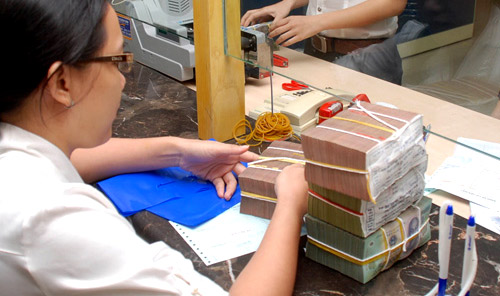VietNamNet Bridge – The non-performing loan (NPL) situation in Vietnam proves
to be worse than previously thought. Dealing with bad debts is one of the most
important things Vietnam needs to do in the banking restructuring.
 |
|
|
Together with Moody, Fitch Rating and Credit Suisse, Standard & Poor (S&P) has paid its special attention to the macroeconomic and financial problems in Vietnam in recent years.
In early November 2011, in its latest report, S&P lowered its assessment about the risk of the Vietnamese banking system from the ninth grade to the 10th, the lowest in the 10-scale ranking of the credit rating firm. This means that in the eyes of S&P, Vietnamese banking system is facing a very high risk level.
With the adjustment in the latest report, Vietnamese banking system has been put together with Greece and Belarus, the economies with very high risks.
What are the reasons which make S&P keep such a pessimistic outlook about Vietnam?
When talking about Vietnamese banking system now, experts would not say about the huge profits of trillions of dong made by some banks, but they would say about the high NPL latent in the banking systems.
According to the State Bank of Vietnam, the NPL has reached 75 trillion dong, or 3.75 billion dollars, accounting for 3 percent of the total outstanding loans of the whole banking system.
However, according to Le Xuan Nghia, Deputy Chair of the National Finance Supervision Council, the real NPL amount would reach 100 trillion dong, or 5 billion dollars.
Especially, the 5th-group debts, i.e. the loans which may be irrecoverable, account for up to 47 percent of the NPL.
The bad debts from the real estate credit
In HCM City, the outstanding loans provided to non-production sectors (securities, real estate…) reportedly decreased to 18.57 percent of total outstanding loans by the end of October 2011. However, 10 banks in the city still reportedly had had the proportion of outstanding loans to non-production sectors exceeding the allowed level (16 percent).
Meanwhile, experts have affirmed that 90 percent of the outstanding loans to non-production sectors were the loans provided to non-production sectors.
The real estate remains gloomy and no one can say for sure when it would recover. A lot of investors, who borrowed money to invest in the real estate sector, now cannot sell real estate projects to pay bank debts, because the demand remains very weak.
Where to find money to handle with bad debts?
Handling with the bad debts would be obviously a key task to be implemented when carrying out the bank restructure. Nghia from the National Finance Supervision Council stressed that it is necessary to clear all the bad debts in order to make the asset balance sheet healthier.
However, in order to make commercial banks’ finance situation transparent, it will need to use money. Sources have said at least 8 banks have been put into the black list of the State Bank.
In 1997-2007, Vietnam once also to restructure banks. At that time, only 17 joint stock banks were merged or dissolved. In order to deal with the 17 banks, the State Bank had to spend 1500 billion dong.
However, the number of banks is now much higher than that in 2007, which means that the amount of money needed will be much bigger.
Nguyen Manh Dung, Deputy General Director of the Vietnam Deposit Insurance, said that it is unfeasible to use the money from the State Budget.
According to Dung, in 1998-2002, Asian countries once carried out the bank restructuring after the 1997 financial crisis. The restructuring cost 126 billion dollars.
Viet Le Quan